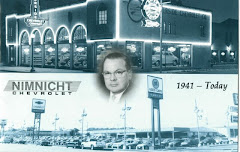Daylight Savings Time ends soon which for a lot of drivers
will mean a much darker commute on their way home from work. You may not have given
it a lot of thought, but driving at night or in the dark poses several unique
driving dangers as compared to driving on a sunny afternoon. Aside from just
having limited visibility at night, most drivers are generally more fatigued at
night, making it substantially more difficult to concentrate on the road ahead.
We’ve compiled a few tips below to help you drive safer at night.
·
Don’t be
afraid to use your headlights. Even at dusk or at times when you think you
can see fine without them, turn your headlights on. There’s no harm in doing
so. Not only will this increase your visibility, but it will also help other
drivers see your car as well.
·
Make sure
all of your lights work. Check beyond your headlights. Make sure
taillights, brake lights, and fog lights are all working properly and not
burned out before your next nighttime
commute.
·
Maintain
a further following distance. Increase your distance behind another car by
about five seconds longer than you would during the day to give you more time
to respond. This will make it easier to spot and avoid road hazards at night.
·
Put down the cell phone. Really, put it down.
You shouldn’t be texting or trying to dial phone numbers at any point at
which you are driving, but it is especially important to avoid using your cell
phone at night. Driving distractions like this are only magnified and worse at
night.
·
Keep your
eyes moving. Driving at night, especially on roads that are not heavily
populated with traffic, can leave you in an autonomous state. Scan the road in
front of you and look for flashes of light in hard to see places, such as at
the top or a hill or around a curve. This could signal the headlights of an
approaching car or could be the reflection of an animal crossing the road.





 If you own a Saturn vehicle and you are unsure where you can take your car for a Factory Warranty and Repair, then here's a tip. Take your
If you own a Saturn vehicle and you are unsure where you can take your car for a Factory Warranty and Repair, then here's a tip. Take your 